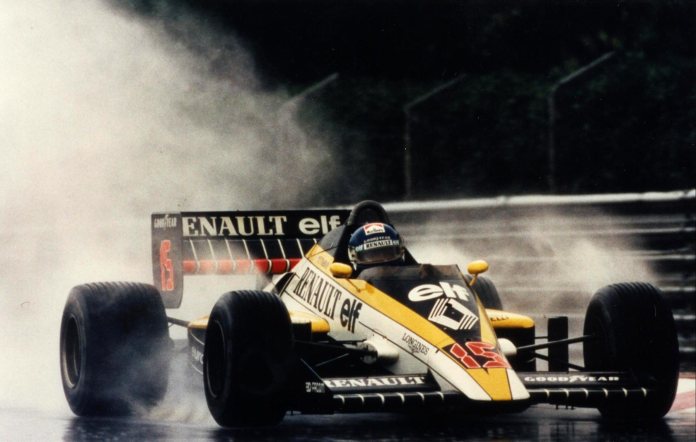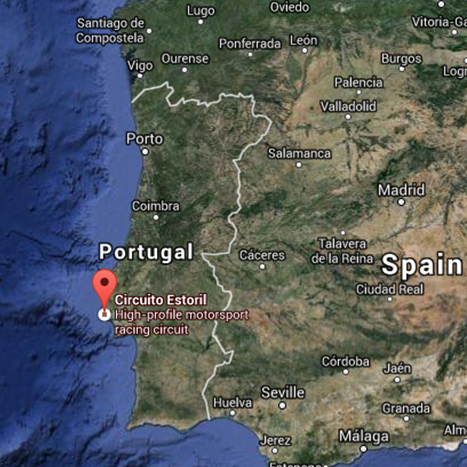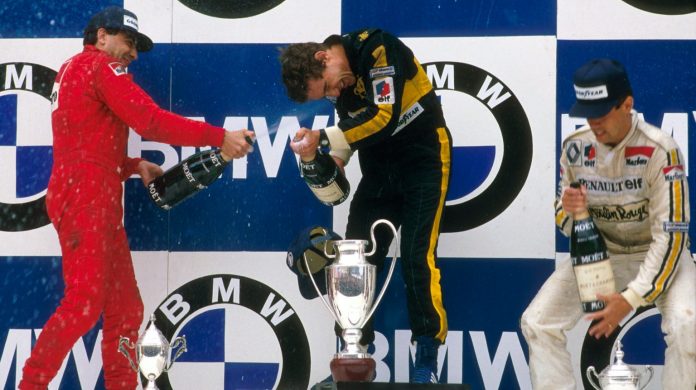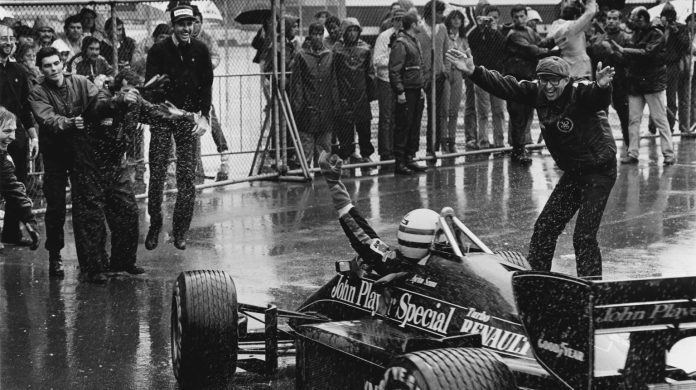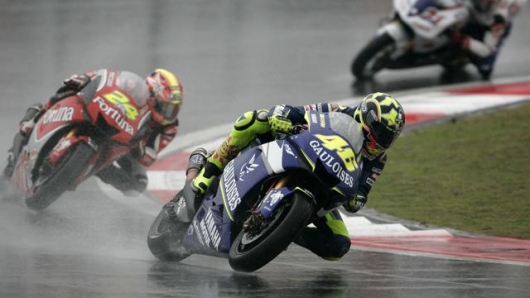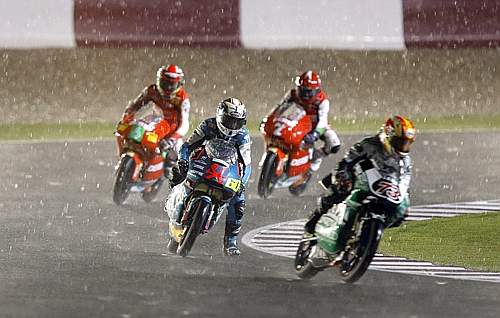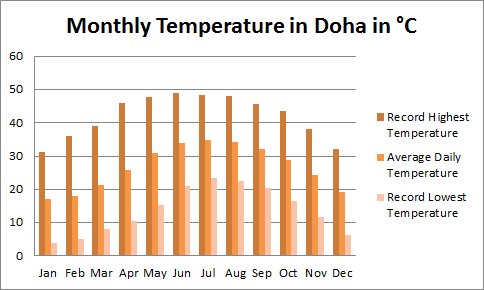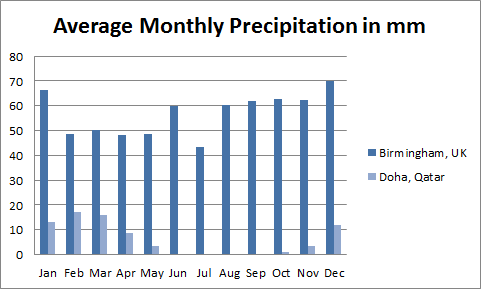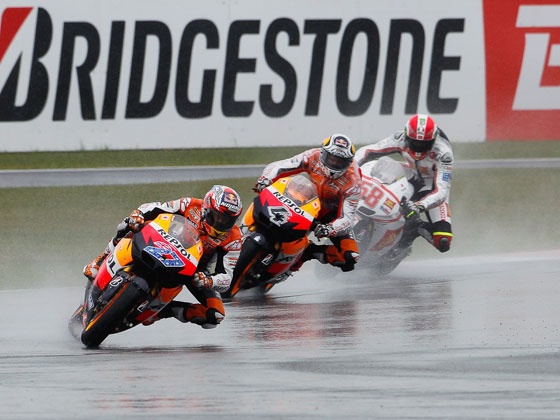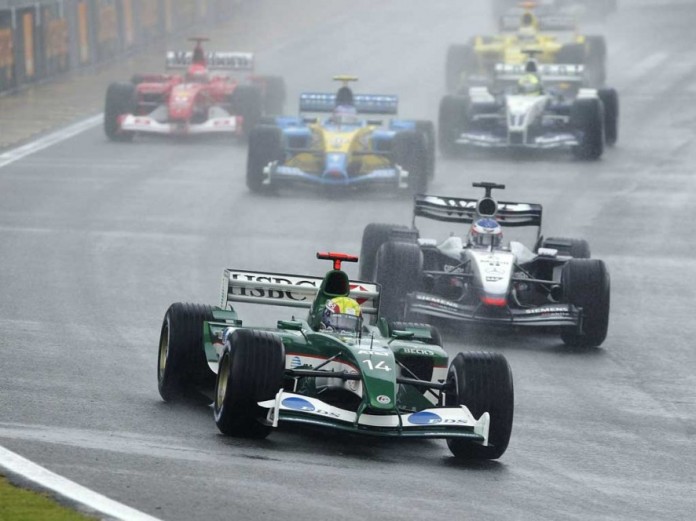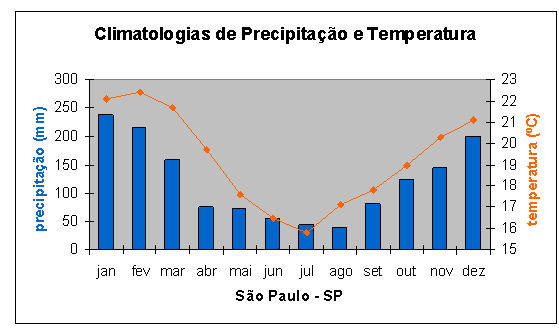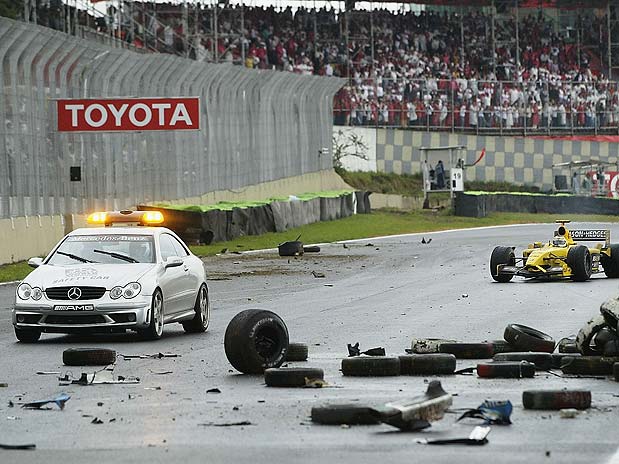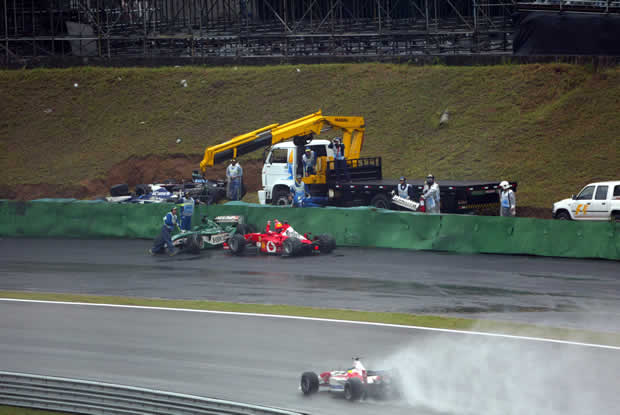Exactly 30 years years ago today Ayrton Senna, driving for Lotus, took his first pole position and his first win in formula 1 racing in exceptionally wet conditions. Except for second place Michele Alboreto, Senna was at least one lap ahead of every other car.
The Portugese Grand Prix is held 9km from the town of Estoril near to the capital, Lisbon, and about 5km from the Atlantic coast. The circuit was built on a rocky plateau, which, combined with its proximity to the coast leaves it vulnerable to strong crosswinds and Atlantic storms. The Lisbon area is classified as a subtropical Mediterranean climate, with an average temperature of 16°C in April.
The heavy rain on 21st April 1985 arrived just before the start of the race, and came from a cyclonic weather system, which means the weather system was spinning anticlockwise (because Lisbon is in the northern hemisphere). This type of weather system is responsible for most of the rainfall in the UK. In Portuagal, as at home, this system would have moved across the Atlantic ocean, picking up moisture which lead to rain as soon as it made landfall. The air and track temperatures were also below average (there are no exact figures) and the cloud base was very low, reducing the light levels considerably.
Weather like this today would almost certainly have led to the race being called off, for the safety of mechanics, drivers and track staff, but 30 years ago the approach to safety was very different. The weather was so bad that experienced driver Alain Prost (who went on to win the championship) lost control of his McLaren. Senna, by contrast, led from start to finish in a master class of wet weather driving. Behind him mayhem ensued, with spins, crashes, jammed brakes, and repeated pit stops. It seemed that the heavier it rained, the further Senna could pull ahead; by halfway through the race water had started to pool on the track and he was starting to lap his competitors.
Here’s what Senna himself had to say:
The big danger was that the conditions changed all the time. Sometimes the rain was very heavy, sometimes not.
I couldn’t see anything behind me. It was difficult even to keep the car in a straight line sometimes, and for sure the race should have been stopped.
Once I nearly spun in front of the pits, like Prost, and I was lucky to stay on the road. People think I made no mistakes but that’s not true – I’ve no idea how many times I went off! Once I had all four wheels on the grass, totally out of control, but the car came back onto the circuit.
People later said that my win in the wet at Donington in ’93 was my greatest performance. No way! I had traction control OK, I didn’t make any real mistakes, but the car was so much easier to drive. It was a good win, sure, but compared with Estoril ’85 it was nothing, really.
Thanks for reading! Please leave your feedback in the comments below, including one thing I could improve about this post. 🙂

Links:
http://en.wikipedia.org/wiki/Lisbon
http://en.wikipedia.org/wiki/1985_Portuguese_Grand_Prix
http://www.f1-grandprix.com/?p=38407
http://en.wikipedia.org/wiki/Alain_Prost

